
On 4 May, a crowd of Tamils gathered in a small tent by the roadside in Vavuniya, a city in Sri Lanka’s Northern Province. Behind them was a wall plastered with the photos of family members who were last seen in the custody of the Sri Lanka Army. Many held up photos of those forcibly disappeared, not only as reminders of their loved ones but in the hopes of being reunited with them. It was a sombre demonstration that garnered minimal international coverage. They had been protesting for almost two thousand days and had received little attention, and much scorn, from the Sri Lankan government.
Meanwhile, on Galle Face, an oceanside urban park in Colombo, a very different protest was taking place. The sound of trumpets and drums blared into the night as Sri Lankans chanted, “Go Home Gota.” They hoisted the country’s flag, emblazoned with the Sinhala lion, as a sign of what they believed was national unity. The Guardian reported that people were describing the moment as “Sri Lanka’s Arab Spring.” Jehan Perera, the executive director of the National Peace Council of Sri Lanka—a Colombo-based NGO—told the newspaper that “people from all communities are coming out onto the streets, I have never seen it before.” One demonstrator told the BBC, “Look: the Muslims are here, the Hindus are here, the Catholics are here. All the same blood.” The same report quoted a Buddhist monk saying, “Sri Lanka has become one united nation.”
This story is from the June 2022 edition of The Caravan.
Start your 7-day Magzter GOLD free trial to access thousands of curated premium stories, and 8,500+ magazines and newspapers.
Already a subscriber ? Sign In
This story is from the June 2022 edition of The Caravan.
Start your 7-day Magzter GOLD free trial to access thousands of curated premium stories, and 8,500+ magazines and newspapers.
Already a subscriber? Sign In
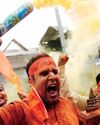
Mob Mentality
How the Modi government fuels a dangerous vigilantism
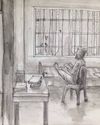
RIP TIDES
Shahidul Alam’s exploration of Bangladeshi photography and activism
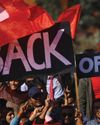
Trickle-down Effect
Nepal–India tensions have advanced from the diplomatic level to the public sphere
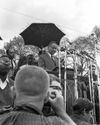
Editor's Pick
ON 23 SEPTEMBER 1950, the diplomat Ralph Bunche, seen here addressing the 1965 Selma to Montgomery March, was awarded the Nobel Peace Prize. The first black Nobel laureate, Bunche was awarded the prize for his efforts in ending the 1948 Arab–Israeli War.

Shades of The Grey
A Pune bakery rejects the rigid binaries of everyday life / Gender
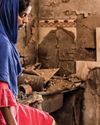
Scorched Hearths
A photographer-nurse recalls the Delhi violence
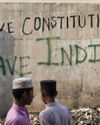
Licence to Kill
A photojournalist’s account of documenting the Delhi violence
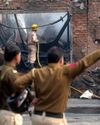
CRIME AND PREJUDICE
The BJP and Delhi Police’s hand in the Delhi violence

Bled Dry
How India exploits health workers

Status Update
India’s telling silence on the Hagia Sophia controversy